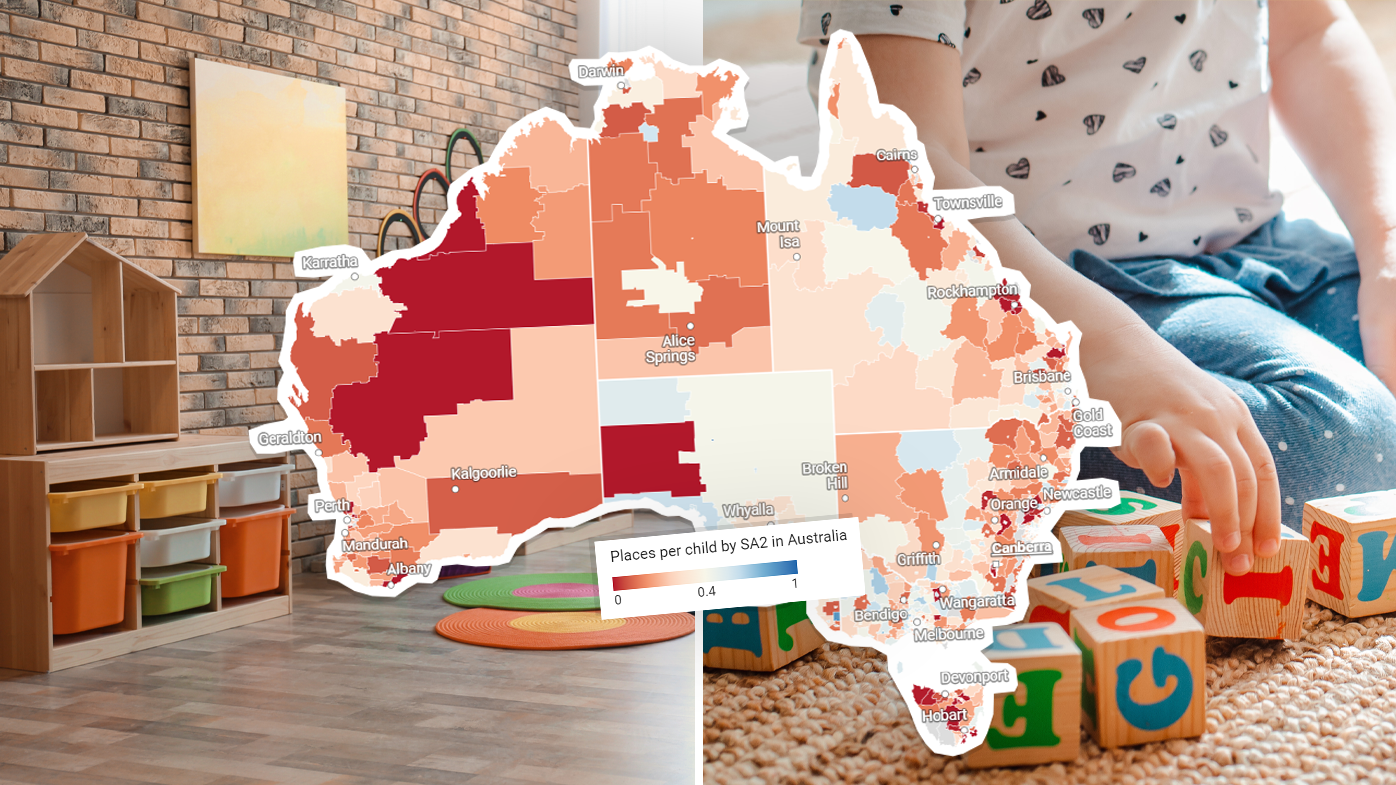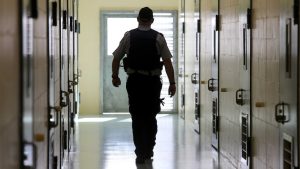
Almost one in four Australians live in a childcare ‘desert’ – where more than three children vie for every childcare place available.
These are the results of a world-first study by Victoria University’s Mitchell Institute as part of an international study mapping childcare access across nine nations.
It also found 700,000 Australians live in locations with virtually no access to childcare whatsoever.
READ MORE: Baby left alone inside childcare centre prompts investigation
“We know that high-quality accessible childcare has huge benefits, for both workforce participation and helping young children to thrive,” Mitchell Institute Director and lead author, Associate Professor Peter Hurley, said.
“For the first time, we can see the impact of different government policies and how nations compare. The results will affect the lives of millions of families around the world.”
As a nation, Australia came in fourth out of the nine nations for overall childcare accessibility, outperformed by Norway, Sweden and Scotland respectively.
The new research takes into account both long daycare and community preschool places.
While accessibility has actually improved in many areas since 2020, with 80,000 new childcare places created, there are regions where the situation for working parents remains dire.
In five out of Australia’s eight states and territories, more than two children vie for every childcare or preschool spot available.
See how your state and region compares below.
New South Wales
The most populous state does not fare well when it comes to childcare access, with only Tasmania and WA performing worse.
As a whole, 28 per cent of the state resides in a ‘childcare desert’.
In a story that is played out across the country, families in Sydney’s affluent inner suburbs in the east and north are mostly well provided for, while those in regional and less affluent areas are most disadvantaged.
In Artarmon on the north shore, there are 0.82 childcare places per child, but drive just over an hour north-west to Bilpin or Colo and there are none.
Many large regional centres, including Dubbo, Bathurst and Singleton, have among the worst childcare access in the country.
Even within suburban Sydney, western suburbs such as Marsden Park have as few as 0.134 childcare places per child.
Victoria
Families in Victoria appear to have an easier time securing childcare than their northern neighbours, with half the number (14 per cent) living in a ‘childcare desert’.
Nevertheless, regional data again shows a wide disparity based on where you live.
While inner Melbourne appears awash with places, outer suburbs such as Wandin and Panton Hill have as few as one childcare place for every ten children living there.
Queensland
The sunshine state comes in third for childcare accessibility, with 0.514 childcare places for every child.
Even so, pockets even within metropolitan Brisbane remain under-serviced, with at least five children competing for every childcare place in Munruben, Enoggera Reservoir and North Stradbroke Island.
Western Australia
Western Australia’s vast land mass and low population density makes providing adequate services such as childcare challenging.
Huge swaths of the state have as few as one childcare place for every twenty children living there.
Even in Perth, most of the outer suburbs including Mundijong, Serpentine, Jarrahdale, Glen Forest and Ballajurra are considered ‘childcare deserts’.
South Australia
South Australia’s outback bucks the trend of other remote locations, with virtually one childcare place available for every singe child.
Families in inner Adelaide are similarly well provided for.
Despite this, one in every five South Australian families (21 per cent) live in ‘childcare deserts’, including in Clarendon, Uraidla, Murray Bridge and Strathalbyne.
Australian Capital Territory
It is perhaps unsurprising that Australia’s capital leads the country for the best access to childcare, with 0.636 childcare places for every child.
Here, only one in seven residents live in ‘childcare deserts’.
However, the map below reveals a wide disparity among regions.
While affluent areas close to hubs of politics and business have as many as 1.7 childcare places for every child, regional areas farthest from the city centre have virtually none.
Tasmania
Tasmania ranked worst in the country for childcare accessibility, with just 0.352 childcare places available for every child.
This means more than half (57 per cent) of families are in a childcare desert, with most of the state outside of the two largest centres of Hobart and Launceston critically short-supplied.
Northern Territory
While coming in a respectable fourth place overall, the Northern Territory again highlights the difficulties of service access in remote areas.
While Darwin is largely well catered for, just half an hour south in Weddell is a childcare dessert.
links to content on ABC
9News





